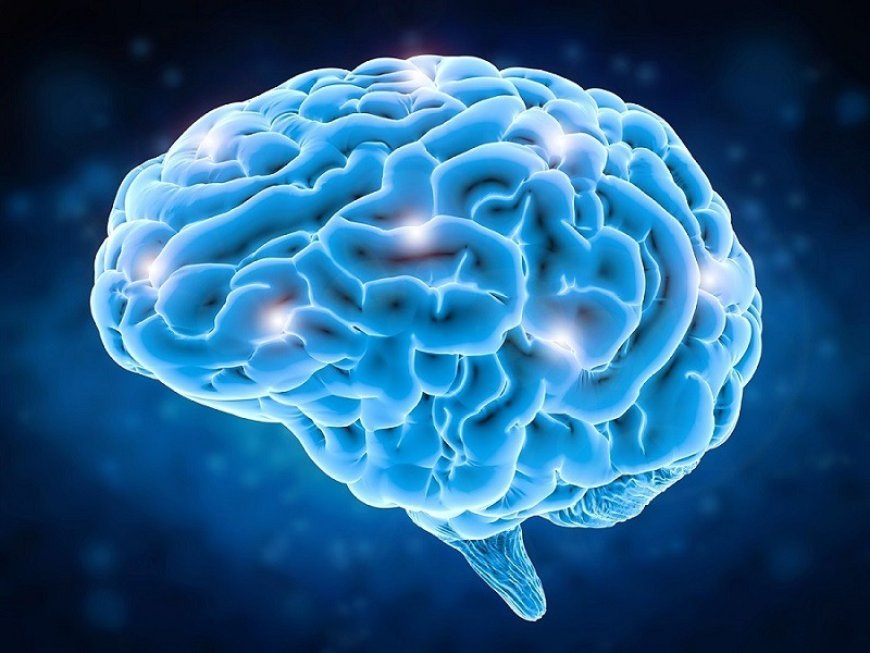Occipital lobe - what are its structure and most important functions?
Brain vision impairment or cortical blindness is a consequence of a bilateral change in the primary visual cortex.

The occipital lobe is placed at the back of the cerebral cortex. What is he responsible for? Find out all about this interesting part of the brain.
Take a deep breath and look around. Do not rush. The world is full of beauty; small nuances that make up our exciting reality. The reason most of us can accurately perceive the visual stimuli around us is because of the occipital lobe. This is the area of ‹‹our brain near the nape of the neck.
It's interesting how this region, the smallest of the four lobes in the brain, is the one that makes the biggest difference in your daily life. Its main purpose may seem simple at first: to pick up information with your eyes, then process it and send it to the frontal lobe for it to emit a response. The occipital lobe does a very important job in our body.
Occipital lobe - location and structure
Now, if you carefully analyze the first look you took at the beginning of this article, you will realize that it is not easy at all. When your brain receives a stimulus, it goes through many processes. It analyzes distances in terms of your position, movements, size, and processes light (color).
You do all this unconsciously. This entails a high level of neurological sophistication. Absolute precision in which the occipital lobe allows you to navigate effectively in your daily routine. It is small, but highly specialized and effective. Let's find out more about it.
Note that like the four cerebral lobes, it has left and right hemispheres. However, each of them is isolated from the other by separating the longitudinal fissure, consisting in turn of the cerebellum and the dura mater.
Functions and areas of the occipital lobe
Your understanding of the world is based almost entirely on visual perception. Moreover, the occipital lobe constantly processes visual stimuli, analyzing distances, shapes, colors and movements.
Everything that passes through the retina passes through this analysis and processing center, and then the information goes straight to the cerebral cortex. However, in order to accomplish this transfer of information, it must first go through the following areas:
- Primary visual cortex (V1). It is located in the rearmost area of ‹‹the occipital lobe. In the event of an injury in this region, the person would not be able to see because they would not be able to process any stimulus, even if their eyes and retinas were in perfect condition.
- Secondary Visual Cortex (V2). Here the pre-striatal cortex and the lower temporal cortex extend. The former, in addition to receiving information from the primary visual area, is also responsible for memory stimulation. This allows you to relate your visual stimuli to other stimuli you've seen before. The lower temporal cortex helps you recognize what you are seeing.
- 19 Brodmann area or Associative visual cortex (V3, V4, and V5). This area receives information from previous structures. Its main function is to process color and motion.
Occipital lobe - injuries
Falls, road accidents, strokes, infections ... Many conditions that can lead to injury or change to the occipital lobe can be serious or even permanent, according to a study conducted at University in Japan. Here are the most common consequences of an occipital lobe injury:
Cortical blindness
Brain vision impairment or cortical blindness is a consequence of a bilateral change in the primary visual cortex. In addition, people with this problem only see blurry shapes. Vague stimuli, the form or color of which they cannot recognize, whether it is a special situation or something moving (or not).
Visual hallucinations
Damage to this area of ‹‹the brain can also lead to visual hallucinations. The injured person may perceive everything around him, but in a twisted way, with strange colors and distorted size.
Epilepsy
The Department of Neurology at the Yale School of Medicine has clarified the link between the occipital lobe and epilepsy through a study. A person can experience a seizure by overstimulating neurons in that area from exposure to an intense flash of light. It is therefore another type of epilepsy associated with this particular area of ‹‹our brain.
In conclusion, note that the occipital lobe may be associated with other processes beyond vision.
What's more, neuroscientists suspect it may have something to do with memory as well. However, there is no conclusive research to date. Perhaps in the coming years, more answers will emerge as researchers uncover more secrets of the human brain.
